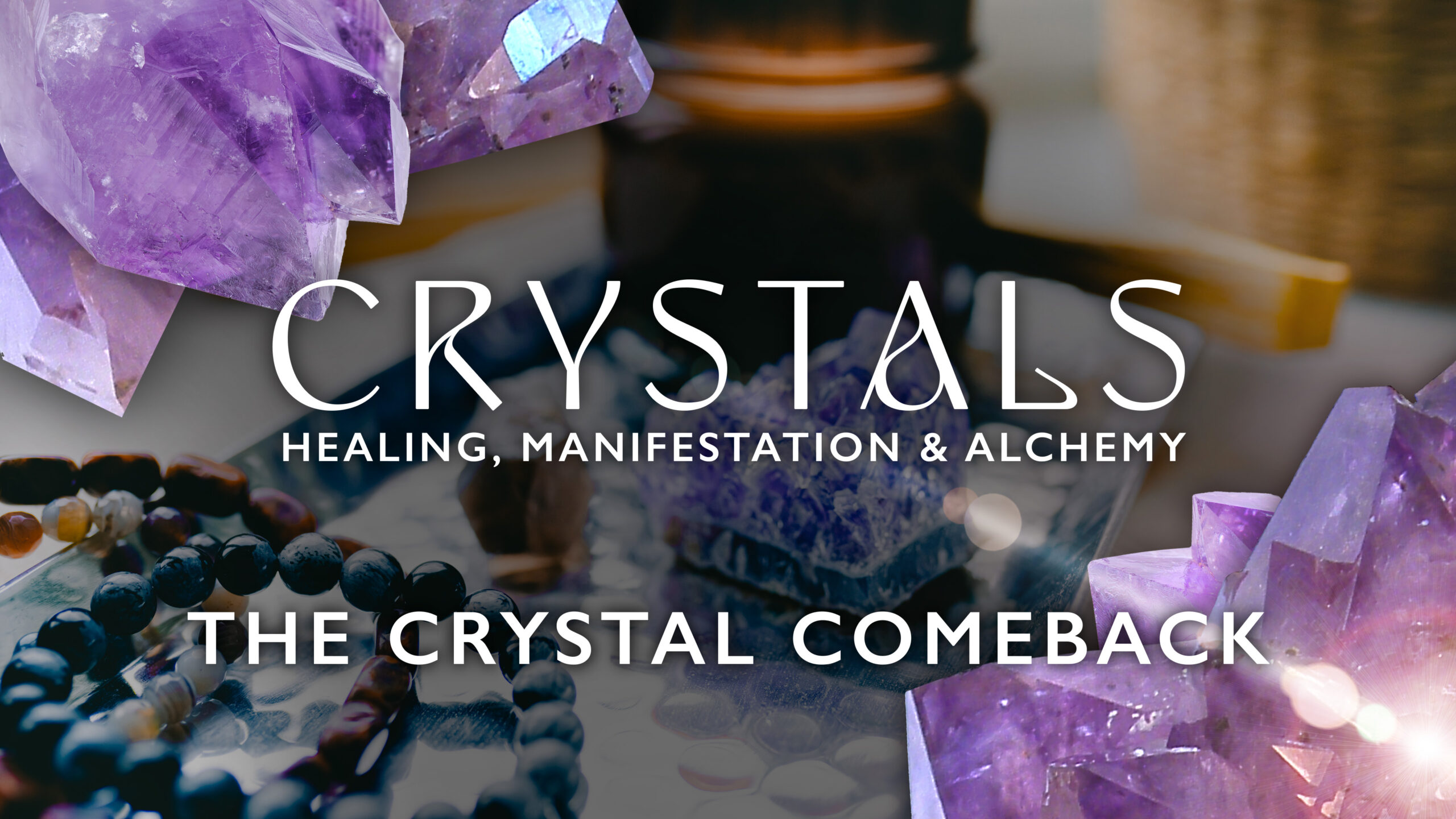Crystals have captivated human imagination for centuries. Their shimmering forms are not only beautiful but are also believed to hold deep symbolic and energetic power. From ancient civilizations to modern wellness culture, crystals continue to play a key role in healing, meditation, and personal development.
In this article, we’ll explore the origins, classifications, uses, and the ongoing debate between science and spirituality surrounding crystals.
What Are Crystals?
Crys-tals are solid materials whose atoms are arranged in a highly ordered, repeating pattern extending in all directions. This internal structure is what gives them their unique geometric shapes and properties such as clarity, hardness, and symmetry.
Crys-tals form naturally in the Earth’s crust under high pressure and temperature conditions, taking anywhere from thousands to millions of years to develop. Common types include quartz, amethyst, calcite, and tourmaline, among many others.
A Brief History of Crystals
Ancient Civilizations and Crystal Lore
Long before modern science began to study minerals, ancient cultures were using crystals for various spiritual and healing purposes.
-
Ancient Egypt: Egyptians used lapis lazuli, turquoise, and clear quartz in jewelry, amulets, and burial tombs. They believed these stones offered protection and guidance in the afterlife.
-
Greece and Rome: The Greeks used amethyst to prevent intoxication and believed crystals were gifts from the gods. The word “crystal” itself comes from the Greek krystallos, meaning “frozen light.”
-
China and India: In Traditional Chinese Medicine and Ayurveda, crys-tals like jade and garnet were used for healing and balancing the body’s energies.
-
Indigenous Tribes: Native American cultures used crys-tals for ceremonial purposes and as tools for connecting with nature spirits.
The Science of Crys-tals
Crystallography, the scientific study of crys-tals, explores how crys-tals grow, what they’re made of, and how their atomic structures affect their physical properties. Scientists classify crys-tals into different systems, including cubic, hexagonal, tetragonal, orthorhombic, monoclinic, and triclinic.
Crystal Properties in Modern Technology
Cry-stals aren’t just spiritually significant — they’re also vital in modern technology:
-
Quartz: Used in watches and clocks for its piezoelectric properties, allowing it to generate electric current under pressure.
-
Silicon Crystals: Integral to semiconductors and microchips.
-
Liquid Crystals: Essential in the screens of TVs, smartphones, and laptops.
So while the mystical side of crys-tals draws widespread attention, their scientific applications shape much of our daily lives.
Types of Crystals and Their Meanings
There are hundreds of known crys-tals, each with unique characteristics. Here are some of the most popular and their commonly associated meanings:
1. Clear Quartz
Known as: The “Master Healer”
Uses: Amplifies energy, enhances clarity, supports spiritual growth.
2. Amethyst
Known as: The “Stone of Sobriety”
Uses: Promotes calm, protects against negative energy, aids sleep and intuition.
3. Rose Quartz
Known as: The “Stone of Love”
Uses: Enhances love, self-worth, emotional healing.
4. Black Tourmaline
Known as: The “Protector”
Uses: Shields against electromagnetic and negative energies.
5. Citrine
Known as: The “Success Stone”
Uses: Attracts abundance, boosts creativity, encourages motivation.
6. Lapis Lazuli
Known as: The “Stone of Truth”
Uses: Enhances wisdom, supports self-expression, connects to higher truth.
How Crystals Are Used Today
Crys-tals have seen a major resurgence in popularity due to the growing interest in mindfulness, holistic healing, and spiritual practices.
Meditation and Mindfulness
Crys-tals are often used during meditation to help align the chakras, deepen focus, or connect with higher consciousness. Practitioners may hold them in their hands, place them on their bodies, or surround their meditation space with them.
Energy Healing and Reiki
Energy healers use crystals to clear blockages and promote energy flow. Specific stones are placed on or around the body to align the chakras and restore balance.
Home Decor and Feng Shui
Placing crystals around the home is believed to influence the energy of a space. For instance, black tourmaline near entrances may ward off negative energy, while rose quartz in the bedroom encourages harmony and love.
Personal Talismans
Many people carry small crystals in their pockets, bags, or as jewelry for emotional support, protection, or to stay grounded throughout the day.
Crystals are believed to absorb energies from their surroundings. To keep them “energetically clean,” they must be regularly cleansed and recharged.
Common Methods Include:
-
Moonlight: Leave crystals under the full moon overnight.
-
Salt Water: Soak them in sea salt and water (check if your crystal is water-safe).
-
Smudging: Use sage, palo santo, or incense to cleanse.
-
Sound: Use a singing bowl, bell, or chanting to clear vibrations.
Charging them can be done under sunlight, moonlight, or by placing them near other energy-enhancing stones like selenite or clear quartz.
The Debate: Science vs. Spiritual Belief
Despite their widespread use in holistic circles, crystals remain controversial in the scientific community.
The Scientific View
To date, there is no conclusive scientific evidence proving that crystals possess healing powers beyond a placebo effect. Many scientists attribute reported benefits to the power of belief, also known as the placebo response — where positive results arise from the expectations of the user rather than the object itself.
The Spiritual and Psychological Argument
Proponents argue that healing is a complex process involving both mind and body. If crystals help someone focus, feel grounded, or reduce anxiety, then their use is valid — even if it’s psychological. Additionally, the act of setting intentions with crystals encourages mindfulness, which is scientifically linked to improved mental well-being.
Ethical Sourcing and Sustainability
With the booming demand for crystals, ethical sourcing has become a concern. Many mines, especially in developing countries, operate with poor labor conditions and environmental degradation.
When purchasing crystals, it’s important to:
-
Ask about the source
-
Support local or small-scale vendors
-
Choose ethically mined or lab-grown alternatives
Just like with fashion or food, conscious consumerism matters.
Crystals in Popular Culture
Crystals have become a cultural phenomenon, appearing in:
-
Social media: Influencers and wellness gurus share their favorite stones and rituals.
-
Fashion: Crystals adorn clothing, jewelry, and even makeup palettes.
-
Literature and film: From Harry Potter’s magical stones to science fiction energy crystals, they continue to inspire imagination.
This fusion of spirituality and pop culture reflects a broader desire to reconnect with nature and ancient wisdom in the digital age.
Final Thoughts
Whether you view them as powerful energetic tools, psychological aids, or simply beautiful gifts of nature, crystals have an undeniable allure. Their geometric beauty, ancient legacy, and modern-day siAs with all spiritual practices, the most important factor is what works for you. Crystals offer a pathway — not a prescription — and like all tools, their true power lies in how you use them.gnificance make them more th




